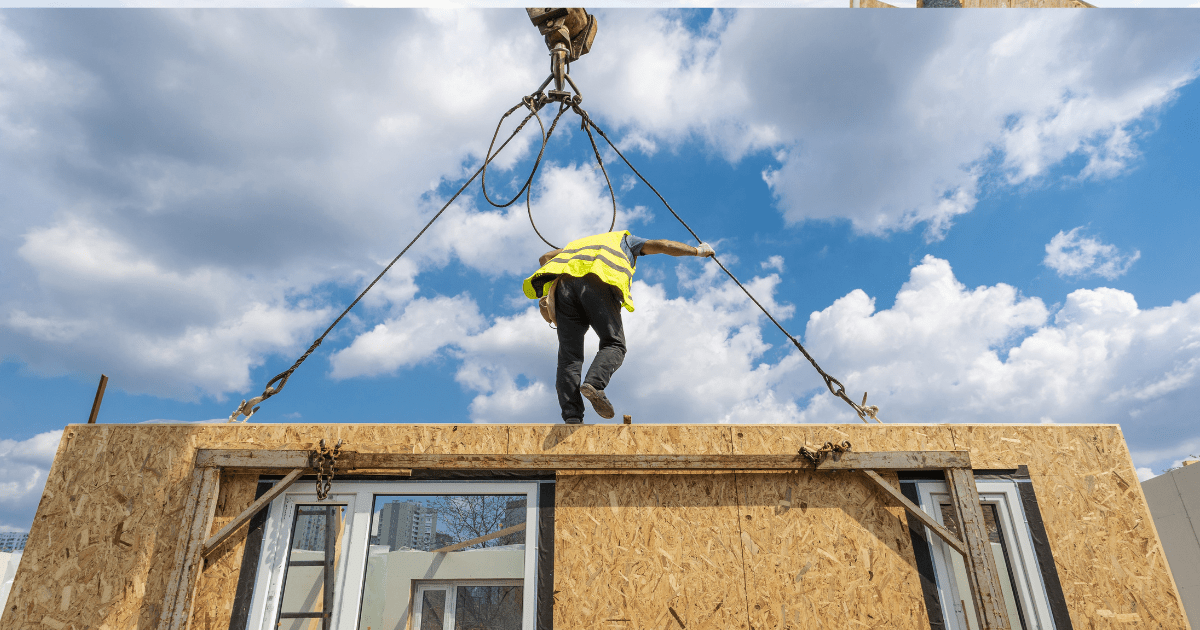In the world of construction, change is the only constant. Among the most groundbreaking advancements is modular construction technology. This innovative approach redefines how we build, offering solutions that are faster, cost-effective, and sustainable. But what exactly is modular construction technology, and why is it generating so much buzz?
What is Modular Construction Technology?
Modular construction involves creating building sections, or modules, in a factory setting before assembling them on-site. Imagine building with giant Lego blocks, where each block is a pre-fabricated piece designed to fit perfectly into the final structure.
Key Concepts
The core idea is simple: fabricate standardized sections of a building in a controlled environment, then transport these sections to the construction site for final assembly. This method contrasts sharply with traditional construction, where most of the building is constructed on-site.
Types of Modular Construction
Modular building comes in two primary varieties:
- Permanent Modular Construction (PMC): These are intended to remain in one location indefinitely.
- Relocatable Buildings (RB): These structures can be disassembled and moved to different sites as needed.
Benefits of Modular Construction
Speed and Efficiency
One of the most significant advantages of modular construction is speed. Since modules are constructed in factories simultaneously with site preparation, projects can be completed 30-50% faster than traditional methods.
Cost Savings
Modular construction can significantly reduce costs. The controlled factory environment minimizes waste, and the streamlined process cuts labor costs and reduces the likelihood of delays.
Quality Control
Factory settings allow for better quality control. Each module is built using precise machinery and is subject to rigorous inspections, ensuring higher consistency and quality.
Environmental Impact
Modular construction is often more environmentally friendly. The efficient use of materials and reduction in waste, coupled with the potential for using sustainable building practices, makes it a greener choice.
The Process of Modular Construction
Design Phase
The process begins with detailed planning or design. Architects and engineers create precise blueprints, considering the specific needs and constraints of the project.
Fabrication in Factories
Modules are constructed in a factory setting using pre-engineered designs. This step involves precise measurements and quality control checks at every stage.
Transportation and Assembly
The modules that are finished are delivered to the building site. Cranes and other machinery are used to assemble the modules quickly and efficiently, following the planned layout.
Types of Modular Construction
Permanent Modular Construction (PMC)
PMC involves constructing buildings intended to remain permanently in one location. These are built to the same codes and standards as traditional buildings and can include everything from homes to high-rise buildings.
Relocatable Buildings (RB)
RBs are designed to be disassembled and relocated. They are often used for temporary needs, such as classrooms, offices, and healthcare facilities during emergencies.
Materials Used in Modular Construction
Steel
Because of its strength and durability, steel is a popular option. It’s often used in the framework of modular buildings, providing a robust structure.
Wood
Wood is another common material, particularly in residential modular construction. It’s lightweight and easy to work with, making it ideal for creating custom designs.
Concrete
Concrete is used for its strength and longevity. It’s often used in the foundations and floors of modular buildings, providing a solid and durable base.
Applications of Modular Construction
Residential Buildings
Because they are quick to build and reasonably priced, modular homes are growing in popularity. They offer all the comforts of traditional homes with the added benefits of modular construction.
Commercial Buildings
From office buildings to retail spaces, modular construction is ideal for commercial applications. It makes it possible for companies to grow effectively and rapidly.
Educational Institutions
Schools and universities are also turning to modular construction to meet growing demands. Modular classrooms can be built and installed quickly, minimizing disruption to students.
Healthcare Facilities
In the healthcare sector, modular buildings are used for everything from clinics to hospital expansions. Their speed of construction is particularly valuable in emergency situations.
Modular Construction vs. Traditional Construction
Time Comparison
Modular construction is typically much faster than traditional methods. By fabricating modules in a factory while site work is being done, projects can be completed in a fraction of the time.
Cost Comparison
The efficiency of modular construction often translates to cost savings. Reduced labor costs, minimized waste, and fewer delays all contribute to a lower overall cost.
Quality Comparison
Quality control in modular construction tends to be higher due to the factory setting. Each module undergoes rigorous inspections to ensure it meets all standards.
Challenges in Modular Construction
Regulatory Hurdles
Navigating the regulations and building codes for modular construction can be complex. Different regions may have varying requirements that must be met.
Transportation Issues
Transporting large modules from the factory to the site can be challenging, particularly for remote or difficult-to-access locations.
Design Limitations
While modular construction offers many design possibilities, there are some limitations compared to traditional methods, particularly for highly customized projects.
Case Studies
Successful Projects
Several high-profile projects have successfully utilized modular construction. For instance, the construction of the Pacific Park in Brooklyn, New York, showcased the speed and efficiency of this method.
Lessons Learned
From these projects, valuable lessons have been learned about planning, logistics, and the importance of early stakeholder engagement.
Future Trends in Modular Construction
Technological Advancements
Advances in technology are continually improving modular construction. Innovations like 3D printing and advanced robotics are set to revolutionize the industry further.
Market Growth Projections
The need for quicker, more affordable, and environmentally friendly building solutions is anticipated to propel the market for modular construction to substantial growth in the upcoming years.
Sustainability and Modular Construction
Eco-Friendly Practices
Modular construction supports eco-friendly practices, such as recycling materials and reducing waste. The controlled environment of factories also allows for better resource management.
Energy Efficiency
Modular buildings are often designed with energy efficiency in mind. Features like improved insulation, energy-efficient windows, and sustainable materials contribute to a reduced environmental footprint.
How to Get Started with Modular Construction
Choosing a Provider
Selecting the right modular construction provider is crucial. Look for companies with a strong track record and experience in the specific type of building you need.
Planning and Design Considerations
Complete planning and design are necessary for a modular building project to be successful. Assist engineers and architects closely to make sure all of your requirements are satisfied.
Common Misconceptions about Modular Construction
Quality Myths
Some people believe modular buildings are of lower quality, but this is a misconception. The controlled factory environment often results in higher-quality construction.
Cost Misunderstandings
There is also a myth that modular construction is more expensive. In reality, it can be more cost-effective due to the efficiencies in the building process.
Building technology is undergoing a revolution because to modular construction, which has many advantages including speed, cost savings, and sustainability. While there are challenges to overcome, the future looks bright for this innovative approach. By understanding and leveraging the advantages of modular construction, we can build better, faster, and more sustainably.
FAQs
Does modular building cost more than traditional building?
No, modular construction can often be more cost-effective due to reduced labor costs, minimized waste, and fewer delays.
How long does it take to build a modular home?
Building a modular home can take as little as a few weeks to a few months, depending on the complexity of the design and the site preparation.
What are the limitations of modular construction?
Some limitations include regulatory hurdles, transportation challenges, and design constraints for highly customized projects.
How durable are modular buildi






